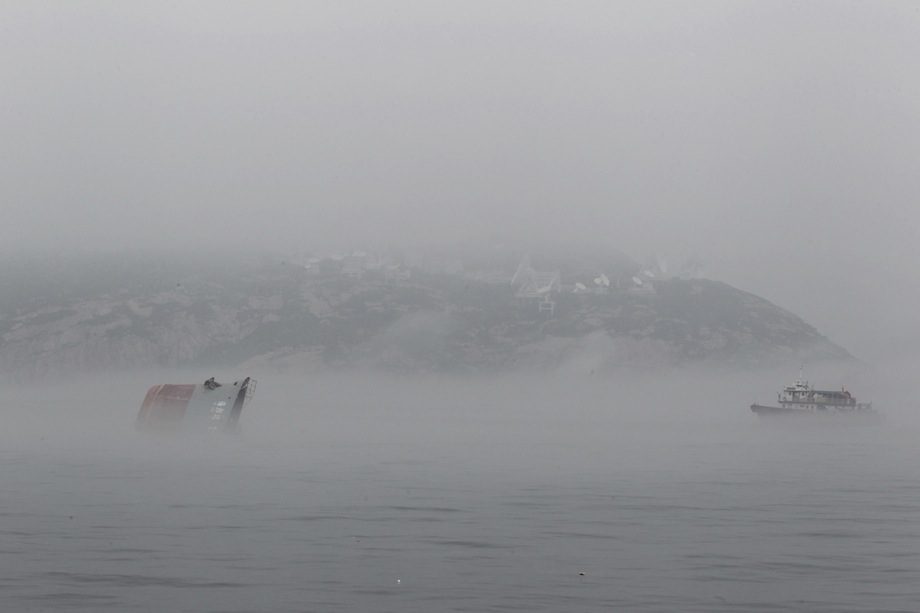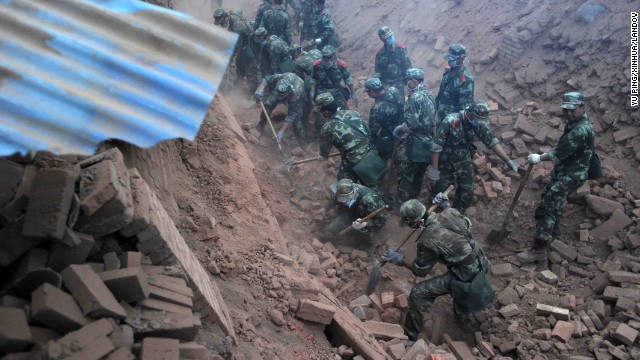
Chinese aid workers managed to reach remote areas of south-western China today giving a much-needed boost to rescue efforts following a powerful earthquake on Saturday which has left more than 200 people dead and thousands badly injured.
Landslides and narrow roads have made it difficult for aid and rescue workers to reach areas of Sichuan province, though some managed to get through to the remote Baoxing country on foot yesterday. Limited access and a disrupted communications networks had prevented a clear picture of the devastation from emerging.
Saturday’s earthquake, which was measured by China’s earthquake administration at magnitude 7.0 and by the US Geological Survey at 6.6, had its epicentre in Lushan county, near the city of Ya’an, on the Longmenshan fault, where the Wenchuan earthquake in 2008 killed over 90,000 people five years ago. “Relief is getting through but much more slowly than we would like to see,” said Francis Markus, spokesman for the International Federation of Red Cross and Red Crescent Societies.
“It’s obviously difficult for people who have been through this disaster to spend a day without supplies,” said Mr Markus. The earthquake, which struck at 8am on a Saturday when schools and offices were closed and many people in farming communities were out in the fields, has mostly affected rural areas.
“We lost everything in such a short time,” 20 year-old college student Luo Shiqiang told the Associated Press. He said his grandfather was just returning from feeding chickens when their house collapsed and crushed him to death.
“I was working in the field when I heard the explosions of the earthquake, and I turned around and saw my house simply flatten in front of me,” said Fu Qiuyue, a 70-year-old rapeseed farmer in Longmen.
China’s earthquake response has become a well-drilled machine since the 2008 Wenchuan earthquake. State media said Beijing was quick to mobilise troops and rescue workers. In all, 18,000 soldiers and officers from the different wings of China’s military, including the army, the armed police and the paramilitary reserves, have been mobilised. So far 10,000 have reached areas that were worst hit, the Chengdu Military Area Command (MAC) said.
But some residents said little had been done after Wenchuan to build up earthquake defences in Lushan and Baoxing counties, which were worst hit at the weekend.
“Maybe the country’s leaders really wanted to help us, but when it comes to the lower levels the officials don’t carry it out,” said Luo Shiqiang. In some parts of Baoxing country, more than 60 per cent of buildings had suffered damage and roads to towns in the affected area were wrecked by landslides.
“There are still some pockets that rescuers are working to get into but gradually the picture is becoming clearer,” said Mr Markus. “There are some areas where all the houses were destroyed.”
In some ways, the damage was less devastating than it could have been because many of the houses which collapsed were simple rural dwellings with timber construction.
Rescue workers brought excavators and other heavy machinery as well as tents, blankets and other emergency supplies. Two soldiers were killed after their vehicle slid off a road and rolled down a cliff.
Premier Li Keqiang visited an intensive care unit today, and epicentre of the quake in Lushan County on Saturday, in a gesture reminiscent of his predecessor Wen Jiabao’s hands-on approach during the Wenchuan quake five years ago.
“Be relaxed and relieved. Doctors here will make their utmost efforts to help you recover as soon as possible,” Mr Li told Yue Anhong, a local resident who was buried under rubble and seriously injured.
Sunday 21 April 2013
http://www.independent.co.uk/news/world/asia/chinese-aid-workers-battle-landslides-and-narrow-roads-to-boost-rescue-efforts-after-earthquake-leaves-thousands-injured-8581903.html




